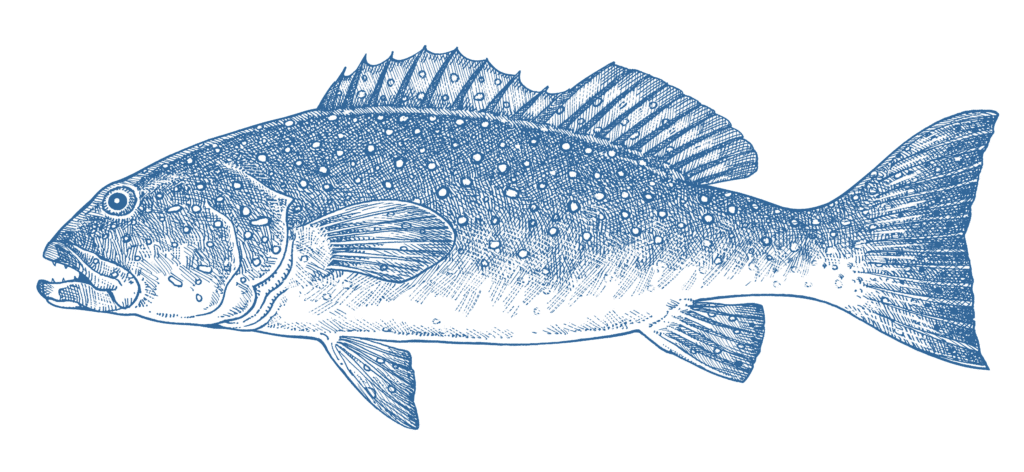
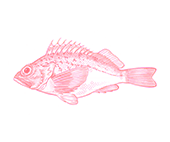
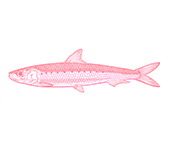
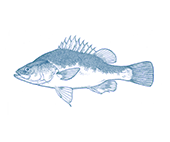
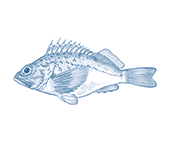
- Say No
Wild Caught
Region:
Commonwealth waters
- Blue eye trevalla are mostly caught using bottom longline methods in depths between 200-600m in a Commonwealth-managed fishery that catches multiple species of fish, including blue grenadier and pink ling.
- There are concerns that blue eye trevalla populations are nearing a seriously overfished state.
- The fishery catches other threatened species such as Australian fur seals, deepwater sharks and seabirds, although industry has been proactive in trying to reduce mortalities of these vulnerable species.
- The fishery is potentially impacting endangered bycatch species that used to be mainstays of the fishery, such as eastern gemfish.
- The fishery operates around a major global ocean heating hotspot but does not explicitly account for climate change when setting future catch limits. Significant research is welcome in this area but is overdue.
- There has been significant research into the ecosystem impacts of the fishery, but marine park protections are seriously inadequate and if improved could significantly increase the resilience of target and bycatch species, and vulnerable seafloor habitats.
- The fishery is expected to undergo its second round of major reforms, and implement vital camera monitoring across the fleet in coming years. This has the potential to significantly improve the GoodFish ranking of this fishery in future.
- Commonwealth Southern and Eastern Scalefish and Shark Fishery (Scalefish Hook Sector) (243t in 2021/22)
Blue eye trevalla are a deepwater demersal predatory finfish found in continental slope waters off South America, South Africa, New Zealand and Australia. Their Australian distribution stretches from southeastern Queensland to Western Australia. Blue-eye Trevalla also occur on the seamounts off eastern Australia and south of Tasmania, Lord Howe Island and Norfolk Island. They are found on rocky habitats on the continental slope where the majority of fish are caught between 200 and 600m.
Blue eye trevalla are caught in the Commonwealth-managed Southern and Eastern Scalefish and Shark Fishery (SESSF), which is Australia’s largest source of locally caught finfish for the domestic market. They are mostly caught using demersal longline, autolongline and dropline fishing methods, though a minor proportion of the catch also comes from demersal otter trawl fishing methods.
While it is difficult to determine whether blue eye trevalla is in an overfished state, declines in the key performance indicator for the fishery towards the point where the fishery should be closed warrant serious concern.
There are also serious concerns over bycatch of species including eastern gemfish that used to be primary or secondary target species of the fishery, but have been so severely overfished by the SESSF that they are now on the Australian Threatened, Endangered or Protected Species lists. Catches of eastern gemfish almost doubled in 2020, and it is not known whether this level of catch will allow the species to recover.
No Australian fishery has pushed more of its former target and secondary species onto our endangered species lists, and there is no evidence of recovery for most of these species. Special rebuilding strategies that allow these species to be caught and sold while holding this protected status are largely failing to deliver sufficient if any actual rebuilding.
The SESSF operates around a global ocean heating hotspot, warming at almost four times the global average. While serious climate impacts have been attributed to declining SESSF fish stocks for around a decade, there is still no explicit consideration of climate impacts when setting future catch limits. Significant research is underway in this area, which is welcome but overdue.
There has been considerable investment in scientific research around the ecosystem and habitat impacts of the fishery, but this has not been supported by sufficient implementation of meaningful protections from fishing and climate-related impacts in the fishery, which have both been severe. Commonwealth waters marine parks are in place throughout the fishery but were designed primarily to avoid key fishing grounds, so confer little benefit. While marine parks should be a valuable and cost-effective tool for protecting vulnerable species and habitats; providing both resilience and a scientific resource to manage climate impacts; they (along with existing fishery area closures), protect almost none of the most heavily fished habitats in the fishery. Improving marine park protection will be critical to addressing and rebuilding the future sustainability of the SESSF fishery.
Independent monitoring of sectors of the SESSF that catch blue eye trevalla has been insufficient to ensure robust information is collected on protected species bycatch and fish discarding, which can occur when fish are caught that the fisher holds no quota for, so cannot land without financial penalty. This creates significant risk as it impedes managers in reliably calculating the total impact (of all fishery mortality from retained plus the fish caught but thrown back) on fish stocks from the fishery. The fishery is set to introduce video monitoring across the fleet in 2024 which is welcome and could substantially address this issue, but it is notable that improving this information collection was also a condition of a fishery reform process in 2006 that was not followed through.



